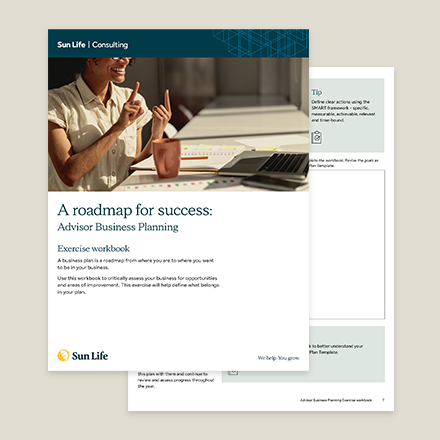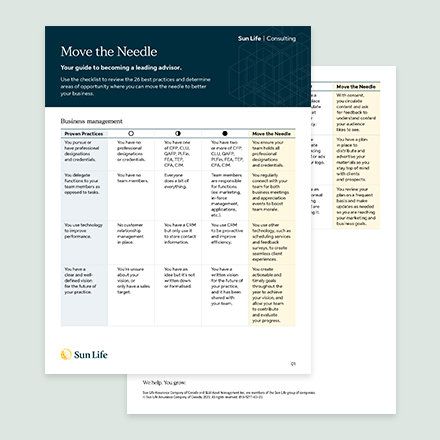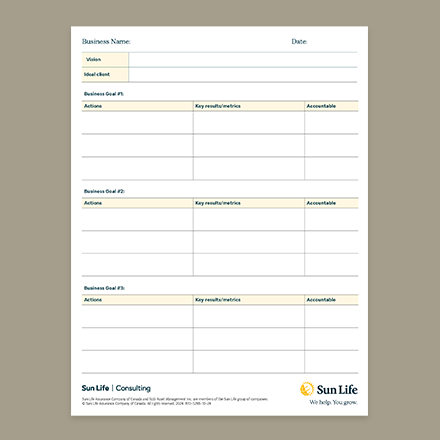
© Sun Life Assurance Company of Canada. All rights reserved.

Create an impactful, written business plan with:
Think of a business plan as your roadmap – defining where you are now, to where you want to be in your business. It can be simple, or complex, but most importantly, should be unique to your business. Even among competitors in the same industry, business plans are rarely identical.
A majority of Canada’s top advisors say a business plan is critical and helps their practice.*
At its core, an effective plan outlines a clear vision, goals and the specific actions required to reach them. It can help you attract more clients, increase referrals and grow your revenue.
Remember, business plans are not set in stone. Markets, the economy, and competitor actions are unpredictable. With a flexible plan, you can adapt and make informed decisions that ensure your business continues to navigate in a positive direction.
Yet only 23% have a formal business plan.*
Why? It can feel daunting to get started. That’s why we created resources to simplify the process.
*Advisor best practices study, Sun Life and Environics Research Group, 2022

You don’t need to start from scratch. These free resources take the guesswork out of business planning and can help you drive your business forward.

Use the exclusive, comprehensive Advisor Business Planning workbook and supporting fillable templates to build a plan that can grow and evolve with your business. Fill out the form to request this resource. A Sun Life relationship manager will send it to you within a few days of submitting it.

Move the Needle is a bonus resource available to you when you request your full workbook. Complete this simple, research-based assessment of your current practice to see what areas you can focus on in your business plan.

Ready to begin your business planning journey? Fill out this one-page template to get started. The information you add about your business goals will guide your business plan.
Stay on the path to ongoing growth with continued, personalized support from your Sun Life relationship manager. Reach out for more information and we’ll contact you within a few days.
Want to share this information on social media? Select the appropriate link below.

© Sun Life Assurance Company of Canada. All rights reserved.
